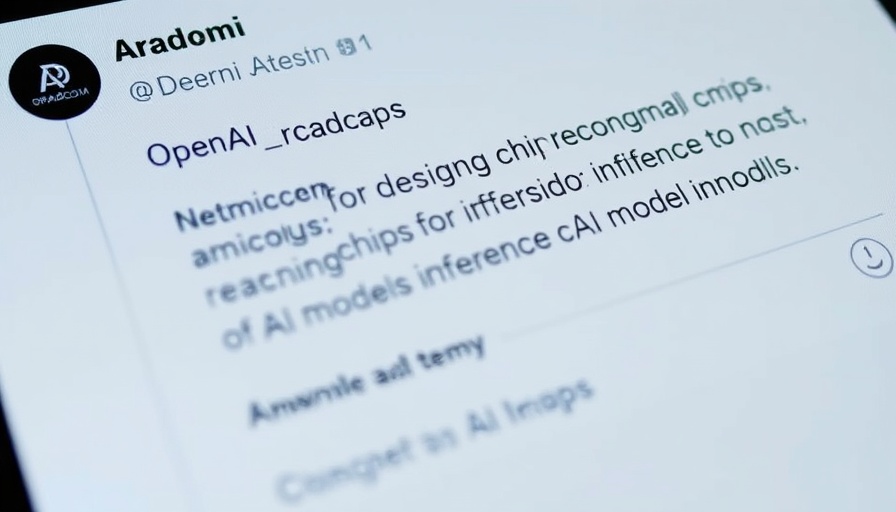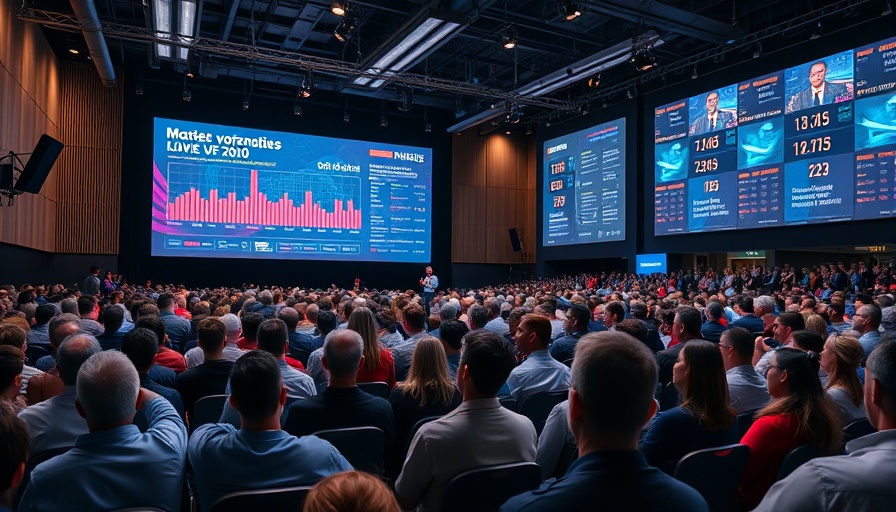
OpenAI's Game-Changing Partnership with Broadcom
OpenAI recently announced a groundbreaking partnership with Broadcom, marking a pivotal moment in the technology landscape as the two companies collaborate to design custom AI chips. This alliance signifies not just a shift in hardware development for OpenAI, but also sets the stage for significant advancements in AI scalability. By focusing on tailored chip architecture, OpenAI aims to align more closely with its specific workload requirements, steering away from the conventional reliance on NVIDIA systems.
A New Era for AI Infrastructure
The strategic move to integrate Broadcom's cutting-edge technology into its operations allows OpenAI to enhance its AI capabilities exponentially. This initiative includes the ambitious deployment of 10 gigawatts of custom AI accelerators, projected to start in late 2026. The collaboration aims to disrupt the current market dynamics and potentially leads the way for more efficient, customized computing solutions for AI applications.
Shifting from GPUs: Implications for the Market
This partnership can be seen as part of a broader trend among major tech companies to develop in-house silicon. OpenAI's move mirrors strategies adopted by giants like Amazon and Google, who are also investing in custom chips to bolster their capabilities. However, the success of these bespoke solutions remains to be seen, especially in comparison to the established CUDA ecosystem, which is prevalent in the AI sector.
Financial Considerations and Market Response
The financial implications of this relationship are noteworthy. OpenAI's partnerships, including those with AMD and NVIDIA, showcase an ecosystem of circular financing where investment flows back into enhancing infrastructure while securing critical technology. However, this raises questions about the sustainability of such business models, especially when OpenAI itself is still non-profitable. Investors are keenly watching how the market responds, as evidenced by Broadcom's stock surge following the announcement—an indication of investor confidence in the venture's potential.
Looking Ahead: Future Trends in AI
As OpenAI forges ahead with its custom chip initiatives, the ripple effects on the operational capabilities of AI technologies could be profound. Industry experts predict that this could lead to more efficient and powerful AI models, ultimately enhancing user experiences across various sectors. Entrepreneurs and founders must understand these developments to align their scaling strategies and leverage the opportunities that enhanced AI capabilities present. For growth-focused businesses, staying abreast of these innovations will be crucial for capitalizing on future advancements in technology.
In conclusion, the partnership between OpenAI and Broadcom heralds a new chapter in the pursuit of cutting-edge AI technology. As they work towards creating custom solutions tailored for their unique needs, companies should analyze how these developments can fit into their growth strategies. With AI becoming an integral part of business operations, embracing innovation is essential for future success.
 Add Row
Add Row  Add
Add 




Write A Comment